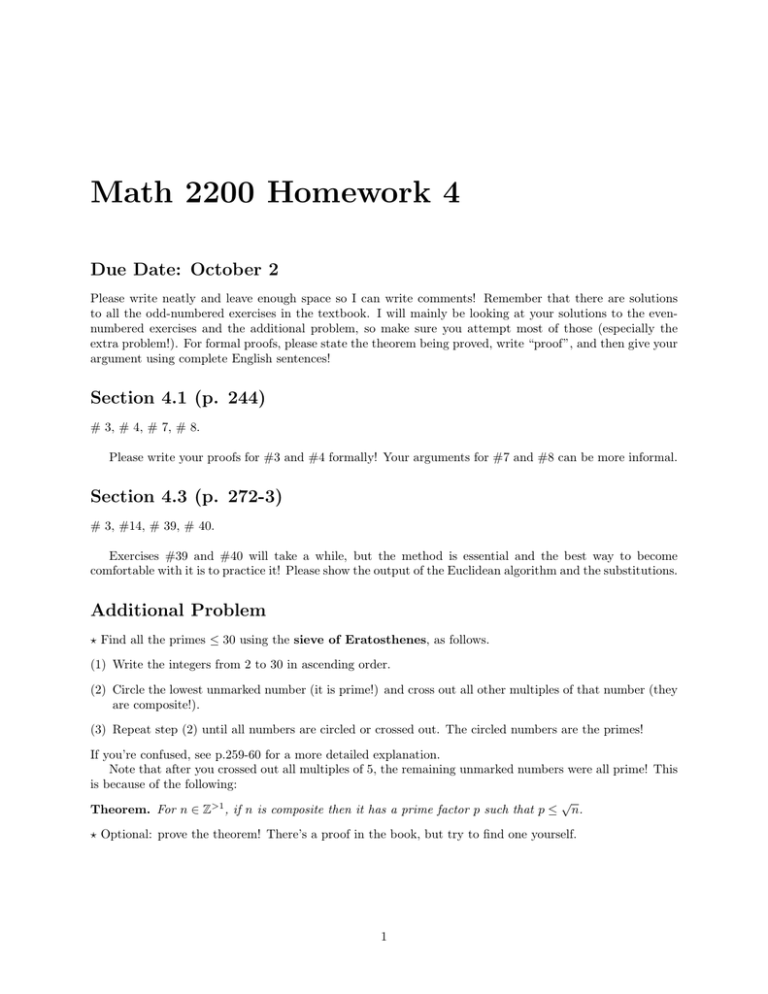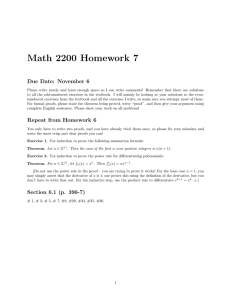Math 2200 Homework 4 Due Date: October 2
advertisement

Math 2200 Homework 4 Due Date: October 2 Please write neatly and leave enough space so I can write comments! Remember that there are solutions to all the odd-numbered exercises in the textbook. I will mainly be looking at your solutions to the evennumbered exercises and the additional problem, so make sure you attempt most of those (especially the extra problem!). For formal proofs, please state the theorem being proved, write “proof”, and then give your argument using complete English sentences! Section 4.1 (p. 244) # 3, # 4, # 7, # 8. Please write your proofs for #3 and #4 formally! Your arguments for #7 and #8 can be more informal. Section 4.3 (p. 272-3) # 3, #14, # 39, # 40. Exercises #39 and #40 will take a while, but the method is essential and the best way to become comfortable with it is to practice it! Please show the output of the Euclidean algorithm and the substitutions. Additional Problem ! Find all the primes ≤ 30 using the sieve of Eratosthenes, as follows. (1) Write the integers from 2 to 30 in ascending order. (2) Circle the lowest unmarked number (it is prime!) and cross out all other multiples of that number (they are composite!). (3) Repeat step (2) until all numbers are circled or crossed out. The circled numbers are the primes! If you’re confused, see p.259-60 for a more detailed explanation. Note that after you crossed out all multiples of 5, the remaining unmarked numbers were all prime! This is because of the following: √ Theorem. For n ∈ Z>1 , if n is composite then it has a prime factor p such that p ≤ n. ! Optional: prove the theorem! There’s a proof in the book, but try to find one yourself. 1






